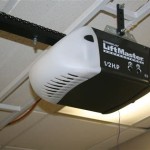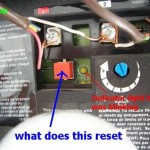Garage Door Handles: A Practical Installation Guide
Garage door handles are essential components that enable the manual operation of garage doors. They offer a secure and convenient way to open and close the door, particularly in the absence of, or as a backup to, an automatic garage door opener. Proper installation is crucial for ensuring the handle functions effectively and contributes to the overall security of the garage.
This article provides a comprehensive guide to the installation of garage door handles. It outlines the necessary tools, preparation steps, different types of handles, and detailed instructions for a secure and functional installation. The information presented is intended for homeowners and professionals alike, aiming to facilitate a clear understanding of the process.
Before commencing the installation, it is imperative to prioritize safety. Wear appropriate protective gear, including safety glasses and gloves, to prevent injuries. Furthermore, ensure the garage door is properly supported to prevent accidental closing during the installation process. This can be achieved by using locking pliers on the track or by engaging the manual release mechanism of an automatic opener (if applicable) and physically securing the door with clamps or similar devices.
Preparing for Garage Door Handle Installation
The initial step in garage door handle installation involves gathering the necessary tools and materials. This includes:
*New Garage Door Handle: Select a handle that is compatible with the garage door's design and locking mechanism. Consider factors such as material (steel, aluminum, zinc), finish (chrome, black, painted), and security features (key lock, T-handle, lever).
*Drill: A power drill is required to create pilot holes and secure the handle to the garage door panel.
*Drill Bits: Select drill bits that are appropriate for the material of the garage door (steel, wood, aluminum) and the size of the screws or bolts used to secure the handle. A set of varying sizes is recommended.
*Screwdriver or Socket Wrench: A screwdriver (Phillips or flathead, depending on the screw type) or a socket wrench (with appropriate sockets) is required to tighten the fasteners.
*Measuring Tape: Used for accurate placement of the handle and ensuring proper alignment.
*Pencil or Marker: For marking the drilling locations on the garage door.
*Safety Glasses: To protect eyes from debris during drilling.
*Gloves: To protect hands and improve grip.
*Level: To ensure the handle is installed straight and level.
*Center Punch (Optional): Useful for creating a starting point for the drill bit, preventing it from wandering.
*Lubricant (Optional): Applying lubricant to the locking mechanism or handle components can ensure smooth operation.
Once the tools and materials are assembled, inspect the garage door for any existing damage or wear. Repair any issues before proceeding with the handle installation. This may include patching holes, reinforcing weak sections, or lubricating the tracks and rollers.
Next, determine the desired location for the new handle. Consider factors such as ease of access, aesthetics, and compatibility with the existing locking mechanism (if applicable). Measure and mark the location carefully using a measuring tape and pencil. Ensure the handle is positioned at a comfortable height for all users. Use a level to ensure the marked lines are straight and horizontal.
Types of Garage Door Handles and Their Installation Considerations
Garage door handles come in various types, each with its own installation considerations:
*T-Handles: T-handles are a common type of garage door handle that are often used on sectional garage doors. They typically feature a T-shaped grip and a locking mechanism that engages with the garage door tracks. Installation usually involves drilling a hole through the garage door panel and securing the handle with bolts or screws. Proper alignment is crucial to ensure the locking mechanism functions correctly.
*Lever Handles: Lever handles offer an alternative to T-handles, providing a different aesthetic and potentially easier operation for individuals with limited hand strength. The installation process is similar to that of T-handles, involving drilling and securing the handle to the door panel. Ensure the lever arm has sufficient clearance to operate without obstruction.
*Locking Handles: Locking handles provide an additional layer of security for the garage. These handles often incorporate a key lock or a combination lock. The installation process may be slightly more complex, requiring careful alignment of the locking cylinder and mechanism. Follow the manufacturer's instructions closely when installing locking handles.
*Lift Handles (Non-Locking): These handles are primarily for gripping and pulling the door, offering no locking functionality. They are often simpler to install, requiring only screws or bolts to attach them to the door. Positioning for comfortable grip is the primary consideration.
*Surface-Mounted Handles: These handles attach directly to the surface of the garage door without requiring a through hole. They are often used on older or custom-made doors where drilling may not be feasible. Adhesive or screws may be used for attachment, depending on the design.
When selecting a garage door handle, consider the specific requirements of the garage door, the desired level of security, and the aesthetic preferences of the homeowner. It is always advisable to consult with a professional if you are unsure about the appropriate type of handle for your application.
Step-by-Step Installation Process
With the preparations complete and the appropriate handle selected, proceed with the installation process:
Drilling Pilot Holes: Using the marked locations as a guide, drill pilot holes through the garage door panel. Start with a small drill bit and gradually increase the size until it matches the diameter of the screws or bolts used to secure the handle. If using a center punch, position it on the marked location and strike it firmly with a hammer to create a small indentation. This will help prevent the drill bit from slipping.
Installing the Handle: Insert the handle through the pre-drilled holes. Ensure the handle is properly aligned and centered. If the handle incorporates a locking mechanism, ensure it engages correctly with the garage door tracks or locking bars.
Securing the Handle: Secure the handle to the garage door panel using the provided screws or bolts. Tighten the fasteners securely, but avoid over-tightening, which could damage the handle or the door panel. Check for proper alignment as you tighten. Ensure the handle is flush against the door surface and does not wobble.
Testing the Operation: After securing the handle, test its operation thoroughly. Open and close the garage door several times to ensure the handle functions smoothly and the locking mechanism (if applicable) engages and disengages correctly. Listen for any unusual noises or resistance. If any issues are detected, adjust the handle position or tighten the fasteners as needed.
Lubrication (Optional): Apply a lubricant to the locking mechanism and handle components to ensure smooth operation and prevent corrosion. Use a silicone-based lubricant or graphite powder, as these will not attract dust and dirt.
Cleanup: Remove any debris or tools from the work area. Dispose of any packaging materials or waste properly.
For handles with more complex locking mechanisms, it may be necessary to adjust the tension on the locking cables or rods. Refer to the manufacturer's instructions for specific guidance on adjusting the locking mechanism.
Inspect the installation thoroughly to ensure all components are secure and functioning correctly. If any issues are detected, address them promptly to prevent further damage or security risks.
Regular maintenance is essential for ensuring the long-term functionality of the garage door handle. This includes lubricating the moving parts, tightening loose fasteners, and inspecting for signs of wear or damage. Replace any worn or damaged components promptly to maintain the security and operability of the garage door.
Consult a professional garage door installer if you encounter any difficulties during the installation process or if you are unsure about any aspect of the procedure. A professional can provide expert guidance and ensure the handle is installed safely and effectively.

Exploring Garage Door Components Detailed Parts Diagram

Faqs For Your New Zealand Garage Door Dominator

Garage Door Locking System Simple Effective The Thrifty Squirrels

Garage Door Locking System Simple Effective The Thrifty Squirrels

Diy Garage Door Installation Guide Cornwell

The Ultimate Guide To Linear Garage Door Opener

Diy Garage Door Installation Guide Cornwell

Qnmwood Garage Door Lock Replacement T Handle For Manual Open Com

Best Guide To Garage Door Styles In 2024 Garageworks

Upgrade Your Garage Door To French Doors Feasible Or Not Octopus Skirting
Related Posts








